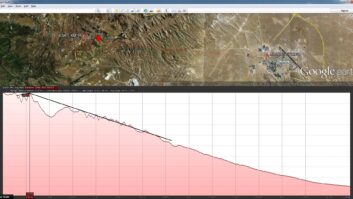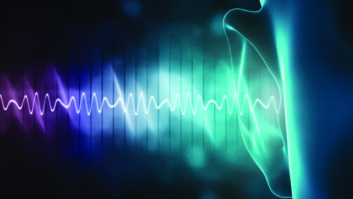Proven performance
Apr 1, 2003 12:00 PM, Chriss Scherer, editor
Finding a completely analog facility today is rare. Except for natural analog sources, such as microphones and speakers, digital technology has been applied to every element in the audio chain. In most cases, the cost difference between analog and digital is negligible, sometimes favoring digital. The improvement of digital devices over analog is also obvious in most cases. But think about your facility: Is the digital improvement as good as it could be?
I think that many engineers and stations have become complacent with their digital audio paths. The assumption is that because it’s digital, it must be good. Theoretically, this is true. In reality, small variations add up, resulting in less-than-perfect results. Just because it sounds good, don’t assume that it’s perfect.
One advantage to digital is that it allows us to hear some errors that are masked by analog. The inherently low noise floor and resistance to distortion allow the more obvious problems to show. However, our ears alone aren’t sensitive enough to detect everything. This is why we have test equipment. The key is to have the right test equipment.
Everyone complains that there just isn’t time. The adage that there is never enough time to do it right, but there is always time to do it over is truer than ever. Between installation and reactive maintenance, most stations aren’t devoting enough time to preventative maintenance.
When is the last time you examined the air chain? It’s likely that your chain has less-than-perfect audio. Let’s define distortion as a measured difference between two elements from the same source. Some distortion is intentional. Audio processing introduces distortion that is meant to enhance the audio. Audio data compression from encoding algorithms introduces another kind of distortion that is designed to be inaudible.
Lots of elements in the chain may be digital. The audio source may be digital, the routing may be digital and the STL may be digital. The minute changes are cumulative.
If any kind of data reduction is used, it will be harder to track system problems. Traditional analog tests are meaningless because of the nature of the encoding process.
Audio storage systems are another culprit to hindering stellar sound. Re-evaluate the decision to data reduce the audio at its current setting. Hard-drive storage is cheaper than ever. Increasing the data rate and reducing the compression ratio may be an easy way to gain ground.
When was the last time you ran an audio proof? To get a real understanding of how your air chain performs, the tried-and-true method of running audio will reveal many details about the audio path. The excuse that you are short on time is not a new one. Everyone is short on time. Do what you have to do, but make the time at some point.
Run the usual analog tests, but also buy or borrow the tools you need to measure the digital devices. Jitter and bit-error rates are just two of the tests to conduct. Keep in mind that each conversion from analog to digital and back introduces small amounts of distortion. Sample-rate converted inputs will reclock a signal and prevent jitter from being passed to the next device, but the quality of each sample-rate converter varies. The same is true for analog-to-digital and digital-to-analog converters.
The digital tests may reveal inaudible problems, but in time these unheard nasties will get you. You may discover a converter that doesn’t work as well as it should.
Finally, check the pre-emphasis curve in the final limiter. Don’t just meet the minimum criteria, get the pre-emphasis curve as close to ideal as possible. This aspect alone is probably the most overlooked problem.
Radio relies on one sense: audio. We can’t hide behind pretty pictures and graphics. If the audio is bad, there’s no excuse.
Don’t allow your auditory sense to get lazy. It’s a good idea to check your personal audio system and get a hearing test to see how your own audio monitoring system is working.
Take the time to proof you audio chain. You may get the edge on your competition. Make the most of the audio path and put the sparkle back into your on-air audio sound.
Send comments to:
E-mail:[email protected]
Fax:913-967-1905












